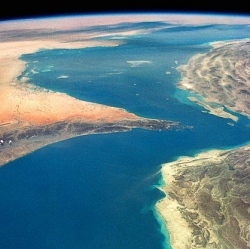
SpaceX successfully landed its Falcon 9 rocket on a drone ship at sea after launching it into space. It’s the third time the company has recovered the vehicle, and the second time the rocket has landed intact on the ship. SpaceX has both demonstrated that it can land the Falcon 9 at sea, and that they can repeat the process.
The logistics for this mission made sticking the landing unlikely, SpaceX said on Monday, but CEO Elon Musk upgraded the chances to "maybe even" just before launch. Today’s mission sent a Japanese communications satellite to a very high orbit above Earth, called a geostationary transfer orbit. Because of the satellite’s destination, SpaceX originally said that the rocket would be "subject to extreme velocities and re-entry heating, making a successful landing unlikely."
Previously, the company had only been able to recover its Falcon 9 twice post-launch, after making multiple landing attempts over the past year and a half. The first success was in December, when the rocket touched down at a ground-based spaceport in Cape Canaveral, Florida. The second landing occurred in April, but that time the Falcon 9 landed on a floating drone ship in the Atlantic Ocean.
Sending satellites to geostationary transfer orbit requires a lot of performance from the Falcon-9 rocket, and that energy then has to be removed before it can make a landing. It is not just the extra speed at which the booster is travelling that must be reduced; it is also the extra loading and heating on components that has to be taken into account.
For SpaceX, the goal is clear, however: if it can recover, refurbish and re-fly rockets it should be able to offer its customers lower-cost launches.
